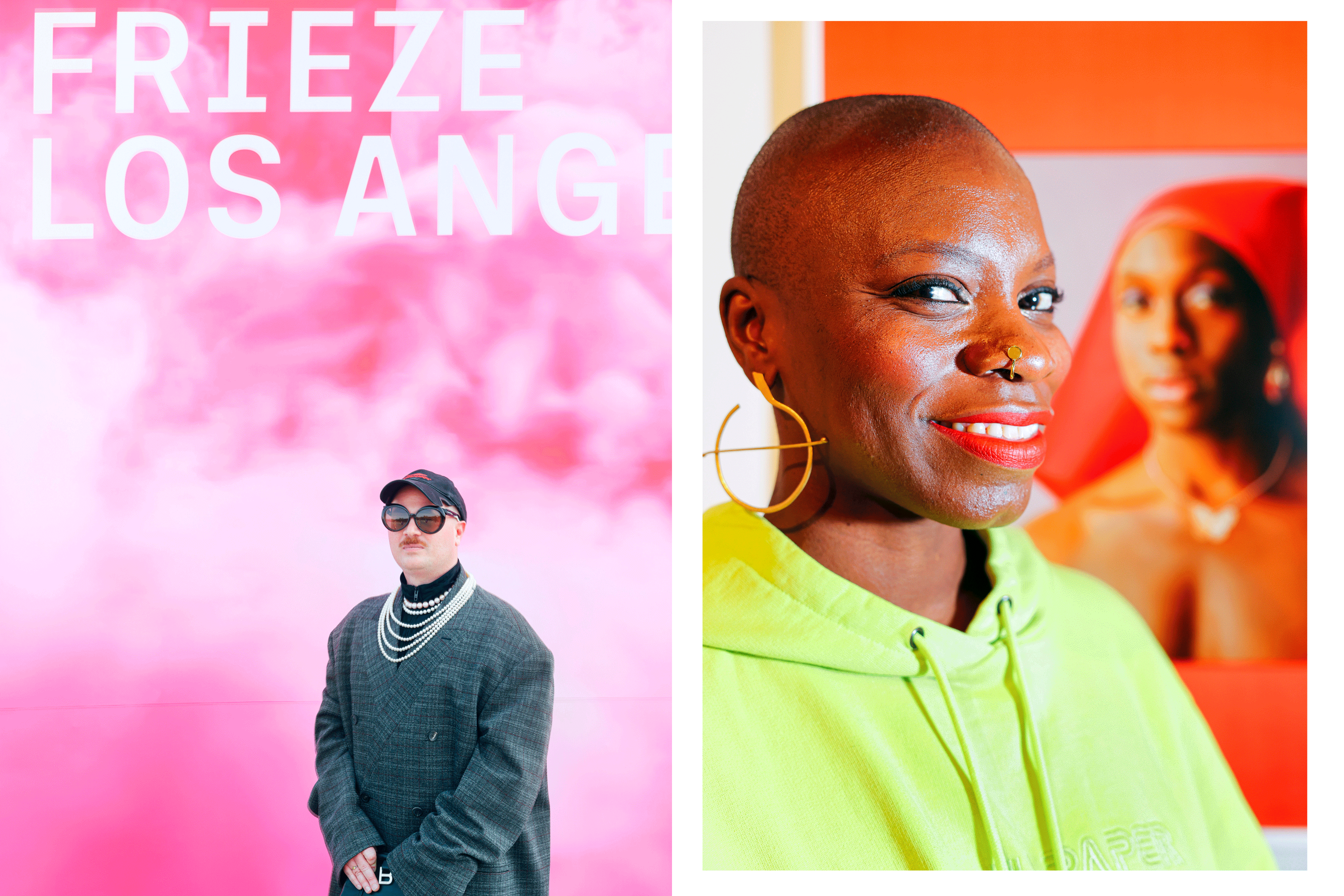A Malaysian Ethnic Mix
- Share via
Three Malaysian schoolgirls float newspaper boats along a reflective waterway. Lush green foliage grows skyward behind them. Only the Arab language newsprint on the youths’ vessels bespeaks an ethnic heritage otherwise hidden in the tropical island scene.
“Paper Boats” by Dzulkifly Buyung is one of 41 contemporary Malaysian paintings on view at Pasadena’s Pacific Asia Museum. The exhibit, “Contemporary Malaysian Painting,” like this pastel on paper, points up the cultural mix of the Malaysian population: While all the works were made by Malaysians, the artists’ ethnic roots--mostly Chinese, Indian or Muslim--are clearly evident.
“What’s emerging in the Third World over and over is an amalgam of cultural styles and traditions which come together in the work of emerging artists,” says museum director David Kamansky.
“The Muslims (in Malaysia) believe in non-representational art, so you have a lot of what we may call abstract art, but which in their world has great meaning,” he said. “They also base a lot of paintings on folk tales and legends and that’s very evident. The Chinese draw on their own, much older tradition, but overlay it with the Malaysian experience. The Indian artists incorporate some Hindu philosophy and their own religious ideas and ideals.”
Still, despite the eclectic contributions of these “fiercely independent” artists, contemporary Malaysian art has a unique, unifying character of its own, Kamansky said.
“It’s a regional style largely influenced by the tremendous variety of natural beauty, the flora and fauna, the bright colors and the tropical light in Malaysia.”
Contemporary art began to emerge in Malaysia in the 1930s. Its artists, shunning various traditional ethnic arts, studied in the United States and abroad, many at major art academies. Their works evince a range of styles, from Abstract Expressionism to Realism, and often reflect the influence of well-known contemporary masters.
“Contemporary Malaysian Painting,” through Dec. 31, is the first major exhibit of its kind in this country.
BOOKS: New in the stores is “Art of the Sixties and Seventies: The Panza Collection,” by Los Angeles Herald Examiner art critic Christopher Knight. An in-depth question-and-answer session with Count Giuseppe Panza di Biumo is accompanied by a color plate catalogue of Panza’s world-class collection of Abstract Expressionist, Pop, Minimal, Conceptual and Environmental art. There’s also an introduction by Museum of Contemporary Art director Richard Koshalek and MOCA associate director Sherri Geldin.
Photo Realist painter Ralph Goings is interviewed by writer Linda Chase in a new book bearing the artist’s name. Featuring 122 illustrations including 50 color plates, the book provides a complete overview of Going’s oeuvre depicting 20th-Century American life .
The artiste living in a isolated garret, unable to relate to the Real World, is a dying breed. Today, artists of all disciplines deal with confusing tax codes, complex grant applications and, increasingly, politics. “Congress and the Arts: A Precarious Alliance” explores the relationship between Congress and the arts, addressing such issues as advocacy techniques, political action committees and the overall economy as it relates to the arts. The book, edited by Margaret Jane Wyszomirski, may be obtained by writing ACA Books, American Council for the Arts, 1285 Avenue of the Americas, 3rd floor, New York, NY 10019.
FOR PERPETUITY: Esther McCoy, Southern California’s seminal architecture scholar, has donated her papers to the Smithsonian Institution’s Archives of American Art. The collection includes books, articles, exhibit catalogues and correspondence. McCoy, now 83 and living in Santa Monica, pioneered a field of inquiry into major California architects. Her best-known book is “Five California Architects.”
More to Read
The biggest entertainment stories
Get our big stories about Hollywood, film, television, music, arts, culture and more right in your inbox as soon as they publish.
You may occasionally receive promotional content from the Los Angeles Times.










